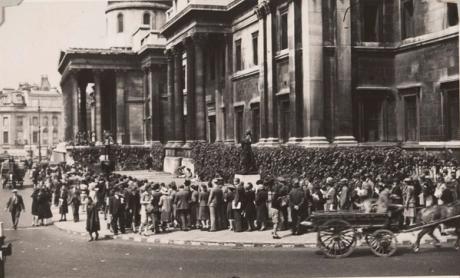
Christine Riding, director of collections and research at the National Gallery, is determined that more people—scholars, researchers, students—should be aware of what a remarkable research archive and library the gallery holds, and make use of it.
To some in the scholarly world there has been a misapprehension that the gallery’s archive is for the use of its curators and researchers only (even though the archive’s opening hours and means to make an appointment are clearly advertised). The gallery has a research strategy, she says, which will see a new research centre launch as part of the second phase of the capital works. Gabriele Finaldi said in May that it “should become the prime institution for the study of Old Master paintings in the UK”.
In the gallery archive is not just the history of a 200-year-old institution—one that for much of the 19th century was seen as an educational centre—but also the means to research the history of collecting and of how artists have worked with the collection. Riding points out one area ripe for research: that from 1838 to 1868 the Royal Academy was in the same building as the National Gallery. It is a reason, she says, that many believe that the works of the Pre-Raphaelites should be in the gallery’s collections, because those artists “did their drawing, went up the stairs, looked at the Arnolfini [portrait by Jan Van Eyck] which was acquired in the 1840s. Voilà! Pre-Raphaelitism.”
Finaldi says how much there is to be learnt from how the gallery has responded both to opportunity and to big challenges. The opening of Charing Cross station, on the other side of Trafalgar Square, brought a spike in visitors. “The gallery during the Second World War—the collection removed to Welsh slate mines for safety; the showing of single pieces from the collection and concerts in the Trafalgar Square building to keep up morale during bombing attacks on London—my goodness, there’s a huge amount to learn there. What an institution can be at a time of crisis. And we certainly looked to the war years for our inspiration when dealing with the Covid crisis.”
In terms of the history of collecting, the archive provides an obvious means to get past the established narratives around some of the great acquisitions in the late 19th and early 20th centuries. The gallery bought at auction sometimes, from sales whose significance is now overlooked as the source collections fit no fashionable profile. Some of the finest pieces in the collection formerly belonged to professionals (dentists or parliamentary solicitors) rather than aristocrats on their uppers.
There is also the history of public opinion. “There has been an extraordinary change in attitudes,” Jacob Rothschild, a former chairman of the gallery, said in 1998, three years after the first grants from the Heritage Lottery Fund. “If you look back to 1929, when the National Gallery bought the Wilton Diptych [acquired from the Earl of Pembroke] and [Titian’s The Vendramin Family, venerating a Relic of the True Cross, from the Duke of Northumberland], all hell was let loose [at paying large sums to wealthy landowners]. The attitude towards these expensive acquisitions has become much more positive over the last decade.”


